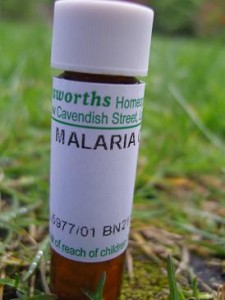 Further documents have been published after the House of Commons held its enquiry into the evidence base for government policy on homeopathy. There are some real treats in there, but I am most concerned about new evidence from the Medicines and Healthcare Products Regulatory Agency (the MHRA) on how they test the public’s understanding of the labeling of homeopathic products.
Further documents have been published after the House of Commons held its enquiry into the evidence base for government policy on homeopathy. There are some real treats in there, but I am most concerned about new evidence from the Medicines and Healthcare Products Regulatory Agency (the MHRA) on how they test the public’s understanding of the labeling of homeopathic products.
The new document was submitted to the enquiry after Professor Kent Woods (pictured) was challenged over how the regulator allows homeopathic products to make claims on their labels when it is known that these claims are false. The concern is that a customer could walk into Boots the Chemist and see two products for, say, hayfever and be unaware that the homeopathic product has no active ingredient, is just a sugar pill and will not help the relief of any symptoms. Clearly, this is a very unsatisfactory situation, where the medicines regulator is charged with ensuring medicines are safe and do what they claim but appears to wave homeopathic products through without regard to these principles. The public are being badly misled by the people charged with protecting them.
In the enquiry, Evan Harris MP asked a very pertinent question of Professor Woods,
Do you think that people reading that will think that it works for symptomatic relief of those minor conditions, or do you think that label that you have read out – and please feel free to read it out again – would make the average person think, which is the truth, as far as you are concerned, that there is no evidence of efficacy backing it up. Which of those two do you think is most likely, for the average person?
At is issue is the question of how far the MHRA go to ensure that the public are not being misled by the labeling they authorize on homeopathic products.
Professor Woods response was,
Well, fortunately, by law all packaging and patient information leaflets are subjected to user testing to ensure that they are comprehensible to the man in the street, and indeed that seems to be a very straightforward statement of the reality. This is a homeopathic medicinal product used within the homeopathic tradition for the symptomatic relief of sprains, muscular aches and bruising or swelling after contusions. That is what it says and the user testing is part of the approval of that leaflet, has the labeling been tested on the average man in the street.
This did not satisfy the MP, Dr Harris,
Sadly my question was not “What does it say? Has it been tested?” My question is, and maybe it is the result of this testing and you need to tell me, does the average person think that that label suggests that it is going to be useful for the symptomatic relief of those indications?
This is an important question. Does the MHRA care if the public are misled by homeopathic labeling or not? What do people make of the labels?
The new documents posted on the House of Commons web site shed light on this question.
It is worth reporoducing the test questions that are used to establish what people make of the labeling on a homeopathic product:
Three rounds of user testings were carried out with ten participants in each testing. Twelve questions relating to the key safety messages were asked and were designed to assess whether the respondent was able to find the information, understand it and use the information. The questions asked were as follows:
1. Can you tell me the name of this medicine?
2. What does the label say that this medicine is for?
3. If you take too much of this product (overdose) what does the label tell you to do?
4. Is there any advice on the label for women who are pregnant or breast feeding?
5. What does the label say is the active ingredient in this medicine?
6. If you have missed a dose of this medicine, what does the label tell you to do?
7. Once you have opened your medicine, how does the leaflet tell you that you should store it?
8. This medicine contains Arnica Montana 30C. What are the other ingredients in this medicine?
9. How many pillules are there in the Clikpak container?
10. This medicine contains lactose and sucrose which are types of sugar. If you have an intolerance to some sugars, what does the pack tell you to do before taking this product?
11. How many pillules does the pack say that you should take in a dose and how many times a day should you take them?
12. The pillules in this medicine are contained in a plastic Clikpak to help protect them. What instructions does the label give you as to how to dispense the pillules from the Clikpak?
These questions fail to address the central concern that labeling homeopathic products for the relief of specific symptoms is going to mislead patients into thinking that there is reason to believe this is true and that there is evidence to back up the stated claims. In my opinion, the MHRA is complicit in supporting a fraud on the public.
Question 2 is quite insidious in my view. It tests to see if the subject understands the medicine is targeted at specific conditions, when there is no evidence to suggest that the medicine can help. What would the answer to the question mean? Question 5 implies there is an active ingredient in the pill. If the test subject answered ‘Arnica’ would the MHRA conclude that the patient has been deceived by the packaging or has just read the label and concluded that it is telling the truth?
Question 8 explicitly states that the pill contains “Arnica Montana 30C”. Only someone with a good understanding of the nonsensical production methods of homeopathy would appreciate that this means that the pill does not contain any Arnica (it has all been diluted away). What would the average customer on the street conclude? In the original hearing, Professor Woods states that the labeling is designed for people who believe in homeopathy,
To begin with the fact that this is a homeopathic remedy, we are making provision for a group of people who believe in homeopathic remedies and, therefore, the first thing to establish is that this particular remedy is recognised by homeopathic practitioners as a homeopathic remedy. That is the essence of what we are trying to prove.
This is simple nonsense, as the products are likely to end up on the shelves of Boots where people may simply misread ‘homeopathic’ as ‘natural’ rather than ‘batshit magic pseudo-medicine’, the wording that ought to be on the label.
 The MHRA appear to completely miss the point over homeopathy. As I have written before, they fail twice over. Firstly, they endorse misleading labels on homeopathic products and fail in their primary mission to “ensure that medicines and medical devices work.” Secondly, they appear to be blind to the blatant abuses that do go on in the creation of homeopathic medicines where claims are made explicitly and implicitly without even seeking MHRA approval.
The MHRA appear to completely miss the point over homeopathy. As I have written before, they fail twice over. Firstly, they endorse misleading labels on homeopathic products and fail in their primary mission to “ensure that medicines and medical devices work.” Secondly, they appear to be blind to the blatant abuses that do go on in the creation of homeopathic medicines where claims are made explicitly and implicitly without even seeking MHRA approval.
The mistake that all regulatory efforts from this government has made is to attempt to regulate alternative medicines as if they were medicines. They are not: they are pseudo-medicines and need a different style of thinking. Trading Standards should take a more leading role in prosecuting misleading claims as they would with any other consumer product. The MHRA need to stop feeling they need to treat homeopathy as if it were medicine and give special dispensations in the claims that they can make. As with any other medicine, homeopathy should only be allowed to make claims if they can back them up with sound evidence.
I understand that there are some efforts within the MHRA to look into the issues I have raised with them. It has been several months since I last heard from the investigating officer involved. My first enquiry took 17 months for a response. In the meantime, I hope the the upcoming publication of the House of Commons Evidence Check report into homeopathy will be severely critical of them for presiding over a regulatory regime that endorses the homeopathic trade in misleading the public.


Interesting. I notice amongst the data the MHRA submitted they include summaries from their consultation. Included are everybody's favourite inept lay organisation, the ARH, but not their more respectable but socially distant cousins, the SoH. Did the SoH not bother sending a document, very unlike them, or have the MHRA submitted an incomplete document to parliament?
Excellent article Andy.
Thanks.
And there is no mention of Clarence House saying anything too. I wonder if that is true?
All very sad. Little (nothing?) has changed since David Colquhoun wrote on this same subject over three years ago that:
"The MHRA breaks its founding principle: it is an intellectual disgrace"
And if anyone wants a reminder of how the various scientific learned societies felt about the MHRA regulation of homeopathic placebos, David did a summary here. For instance, from the Physiological Society:
‘The Physiological Society is concerned with
the scientific investigation of how the body
works … It is our view that "alternative
medicine" has, with very few exceptions, no
scientific foundation, either empirical or
theoretical. As an extreme example, many
homeopathic medicines contain no
molecules of their ingredient, so they can
have no effect (beyond that of a placebo).
To claim otherwise it would be necessary to
abandon the entire molecular basis of
chemistry. The Society believes that any
claim made for a medicine must be based
on evidence, and that it is a duty of the
regulatory authorities to ensure that this is
done.’
As for the MHRA: to coin a phrase –
Quis custodiet ipsos custodes?
I guess the answer, at least in the UK, is parliament. So I shan't be holding my breath.
… but at least the MP's challenge was a good one, The only bit of light in the situation (may only be a candle, but it is light and I'm not sure I expected anything).
Not altogether serious, but it is Friday night with a glass of wine … and I have a 1000C dilution of humming bird in it, so on the basis of less is more, I will be able to fly backwards in the morning
This is confusing (at least from outside UK, as is my case). According with the European Directives that Prof. Woods invoke,
– If the product has no approved therapeutic indication, it can not include any claim about "simptomatic relief" of anything.
– If the product has any approved therapeutic indication the label can contain such statements, but the manufacturer must have presented the results of tests and clinical trials of the product to obtain its authorization. And the label must specify the qualitative and quantitative composition of the product (something like "plain water"?)
I'm not sure, but I'm starting to think that the MHRA has many, many questions to answer…
If labels are only intended to be understood by those who already believe in the product, one wonders how the MHRA could refuse to approve anything from The Secret to crystals to who knows what?
There has been a strong media campaign against homeopathy now for several years.
There cant be many out there who do not now know that homeopathic remedies are infinitely dilute. Come February it looks like there will be more publicity. Do you think that it is going to make any difference to the 10% hard core?
In answer to Q211, I noticed that Professor Woods states that Homeopathic treatments should only be allowed to make claims on their packaging within…
> a system which only allows for claims
> in relation to minor, self-limiting illnesses,
Surely, it's in these exact situations where self deception and confirmation bias result in people believing that Homeopathic treatments work, which in turn leads to a larger following of the practice? (A reason he gives for allowing the continued government funding)
In his next sentence he talks about how quickly they're able to remove products with cancer curing and malaria prevention claims on their packaging. Does he seriously not see the connection in allowing this pseudoscience to infiltrate mainstream medicine, with people starting to believe the more ridiculous claims of it's practitioners?
How would a regulator test to see if the claims of the active ingredient in question 8 were true?
I'm even more angry at the MHRA now. I have made submissions to them and their veterinary equivalent the VMD and the tone of all their requests for submissions and statements in response was very much along the lines of "big boys…oops…Europe made us do it", i.e. We know it's bollocks but our political masters have tied our hands.
I never knew such testing existed. This makes things much worse. The referee may have awarded an I'll-advised free-kick, but the regulators have placed the ball on the penalty spot the blindfolded and bound the goalkeeper.
Remind me, who was the bloke sitting on the left of the witness panel (from our perspective looking at them). His 'careful' responses to tricky questions seemed to give the same impresssion of trying not to offend incompetent political masters.
This really is an example of what happens when scientists are focused on bureaucratic career-progression than acting as independent advisors. It makes an inteesting contrast with the actions of David Nutt and his colleagues.
A fair question would be about one the key word in any labelling of such a product “Homeopathic”. To ensure the public understands the labelling, they ought to be asked “This is a homeopathic pill. What do you understand by the word ‘homeopathic’?”
“To begin with the fact that this is a homeopathic remedy, we are making provision for a group of people who believe in homeopathic remedies…”
Prof Woods should probably get a grip on reality. Medicine, in fact NOTHING, should be based on belief. Enough with the appeal to emotions, we should only ever examine the facts. No authorities, no appeals to ignorance, no slippery slopes, no logical fallacies. I know it’s a hard habit to kick, the habit of belief, but hey, it’s not like Arnica Montana 30C could possibly be addictive. Basing our lives of logic and facts is not going to diminish humanity– we will still have our emotions; we won’t be cold, we’ll be smart! For those who agree with me, I recommend you take a look at this article:
http://www.thehumanist.org/humanist/10_jul_aug/Trent.html
It seems as if the same applies in England, and Canada, the world, really.
Sad.
Wow! So pleased to discover your great article. I’d already written to the MHRA on this exact issue having watched O’Brien and Professor Woods give their evidence (a shocking performance). I’ve added the summary of my response to the MHRA’s recent request for feedback on their regulation of labels, below. You’ll note their new wording seems still to mislead us about the nature of homeopathic products.
Again, nice article – many thanks (the link to the hearing video is broken: this seems to work http://www.parliamentlive.tv/main/player.aspx?meetingid=5257
Regards.
Email to MHRA
RE: Comment on the “Review of Medicines Act 1968: informal consultation on issues relating to the PLR regime and homeopathy” section 25.
In section 25 (of their document) the MHRA considers the scope for label information to be made more specific, particularly for the benefit of those consumers who may be less familiar with the nature of homeopathy and the MHRA proposes the following wording:
“A homeopathic medicinal product licensed only on the basis of safety, quality and use within the homeopathic tradition”
As a non medical person, without detailed knowledge of homeopathic medicines, I am totally unable to deuce from this wording that the product has no scientifically proven effects (beyond the placebo effect). In fact it feels as if its saying its safe and meets significant quality standards.
Is it the intention that the wording should leave me in the dark regarding the product’s usefulness?
Can I suggest any proposed wording includes the sentence below, which makes sense to me, and would seem to comply with the 1992 Directive 92/73/EC
“This product has no scientifically proven benefits.”
Regards,
I suggest a multiple-choice question be added, to test the comprehension of “30C”:
“30C” Dilution is roughly equivalent to mixing 1 ml of ingredient with *what* amount of water?
(a) 30 Liters
(b) An olympic-size swimming pool
(c) Lake Ontario
(d) All of the oceans of the Earth
(e) A sphere of water large enough to contain the entire solar system
(f) A sphere of water 100 light years in diameter
The answer is (f). [131 light years more accurately, but at this point it hardly matters]